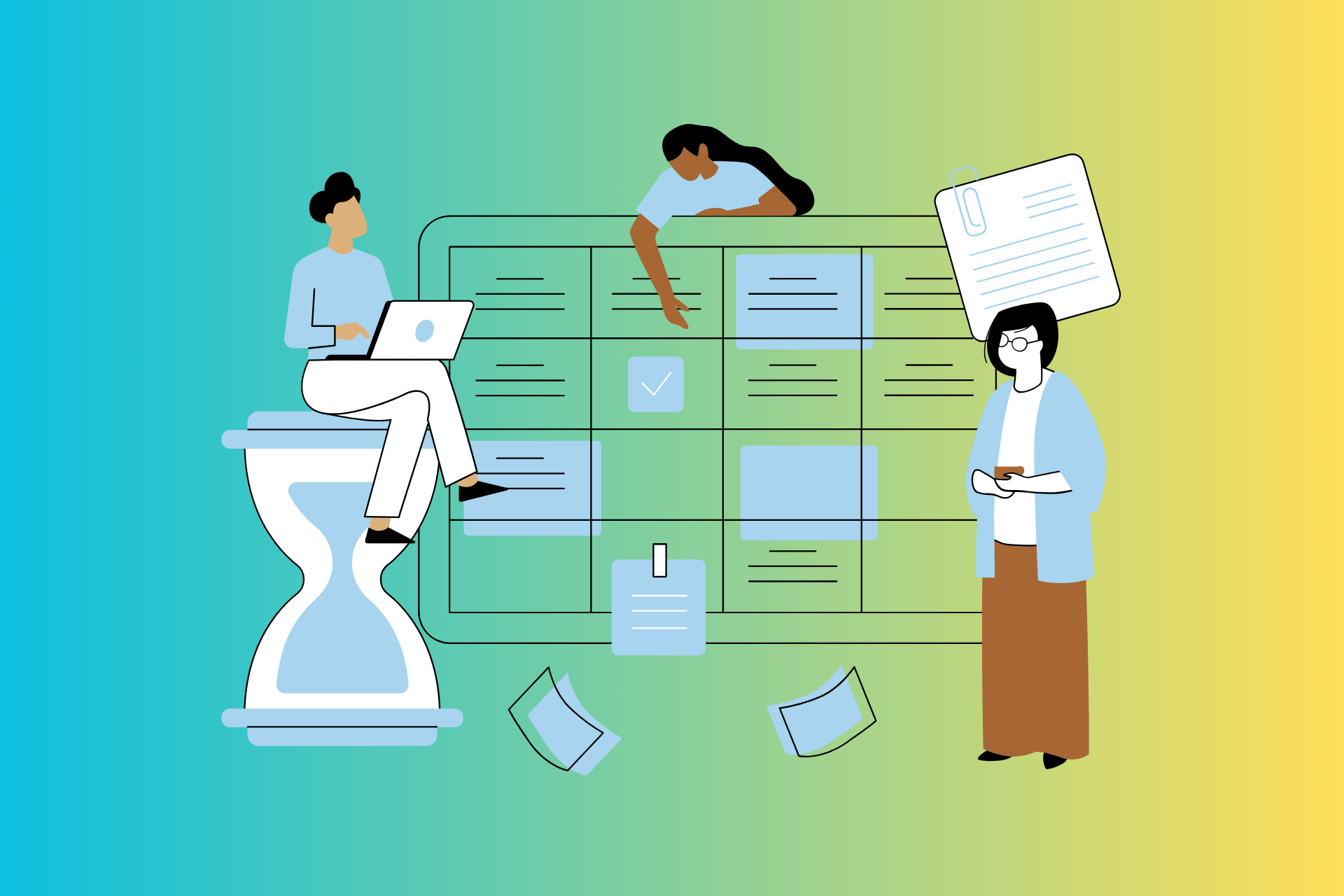What is an Agile Meeting?
An agile meeting is a gathering of people held to discuss, plan, and track the progress of a project that is being developed using the agile methodology. Originally it was the "Agile Manifesto.”
Some of the methods that came out of that are:
This type of meeting is typically shorter and more focused than traditional project meetings, as the agile approach emphasizes constant communication and collaboration among all team members.
We previously blogged about the types of Scrum meetings in this post: What is a Scrum Meeting? A Breakdown of the Different Types; in this article, we look at meetings that fall outside of Scrum, but still fit into the Agile Methodology.
Why Hold an Agile Meeting?
There are many reasons why you might want to hold an agile meeting. Typically, these meetings are used to:
- Get everyone on the same page: When you’re working on a complex project, it’s important to make sure that everyone is on the same page. An agile meeting can help ensure that everyone is aware of the project’s goals, objectives, and deadlines.
- Make decisions: Many agile meetings are used to make decisions about the project. This could include deciding which features to include in the next release, or how to resolve a conflict between team members.
- Keep track of progress: One of the most important aspects of an agile meeting is tracking the project’s progress. This information can be used to identify areas that are behind schedule, and to make adjustments to the project plan accordingly.
- Identify problems: Another key purpose of an agile meeting is to identify any problems that have arisen during the course of the project. This could include anything from technical issues to interpersonal conflicts. By identifying these problems early, you can take steps to resolve them before they cause further delays.
Who Should Attend an Agile Meeting?
The answer to this question will vary depending on the specific project you’re working on. However, in general, there are three groups of people who should always be included in an agile meeting:
- The project manager: The project manager is responsible for ensuring that the project stays on track. As such, they should always be included in agile meetings so that they can provide updates on the project’s progress and make sure that everyone is on the same page.
- The development team: The development team is responsible for actually building the project. They should be included in agile meetings so that they can provide input on the project’s direction and identify any potential problems.
- The stakeholders: The stakeholders are the people who have a vested interest in the project’s success. This could include the project’s sponsors, the client, or anyone else who stands to benefit from the project’s completion. Stakeholders should be included in agile meetings so that they can provide feedback and ensure that the project is meeting their needs.
When Should an Agile Meeting be Held?
The frequency of agile meetings will vary depending on the specific project you’re working on. However, in general, these meetings should be held on a regular basis – once a week is a good starting point, and you can adjust from there as needed.
Some projects may require more frequent meetings, particularly if there is a lot of ground to cover or if the project is facing some challenges. However, as a general rule, you should try to limit the number of agile meetings you hold so that they don’t start to interfere with the project’s actual development.
How to Hold an Agile Meeting
Now that you know why and when to hold an agile meeting, it’s time to learn how to actually conduct one. Here are some tips to help you get started:
-
Keep it focused: One of the most important aspects of an agile meeting is that it should be focused. This means that you should have a specific goal or objectives for the meeting, and that everyone in attendance should be aware of these goals.
Tip: To help keep the meeting focused, create an agenda beforehand and distribute it to all attendees. This will ensure that everyone is on the same page and that the meeting stays on track.
-
Encourage participation: Another key aspect of an effective agile meeting is that it should encourage participation from all attendees. This means that everyone should feel like they have a chance to contribute to the discussion.
Tip: To encourage participation, try to create an environment that is conducive to open discussion. A few things could help with this:
- Follow our first suggestion and distribute an agenda beforehand. Nothing facilitates conversation better than a good heads up.
- Prepare an icebreaker or introductory exercise if there are any participants that are less familiar with the group that’s meeting.
- Ask for feedback from the group as well as open-ended questions from specific participants throughout the meeting.
-
Keep it short: One of the biggest benefits of an agile meeting is that it is typically shorter than a traditional project meeting. This is because the agile approach emphasizes constant communication and collaboration, which can be done more efficiently in a shorter meeting.
Tip: You should try to keep your agile meetings as short as possible. Start at 30 minutes and adjust as-needed from there. If you’re noticing your meetings are regularly needing more than one hour, then plan to meet more frequently, but try to cap them at an hour’s length.
-
Take breaks: Another way to keep your agile meetings effective is to take breaks throughout the course of the meeting. This will help to keep everyone’s energy level up and prevent the meeting from dragging on.
Tip: If you do decide to take a break, be sure to set a specific time limit so that the meeting doesn’t end up going too long. A 5-minute break in any meeting that spans an hour or more will be appreciated by the group.
-
Document the meeting: Finally, you should make sure to document the meeting so that you can review the discussion later. This is particularly important if you’re working on a complex project with many moving parts.
Tip: There are a few different ways you can document an agile meeting. One option is to take notes yourself and distribute them to all attendees afterwards. Another option is to use a meeting minutes template, which you can find online.
Topicflow creates continuity from meeting-to-meeting. Prepare your agenda, share it with the team, capture Action Items, Decisions, and then distribute the results to all participants, all in a single app that pairs with your favorite calendar for simplicity.
Additional Tips for Effective Agile Meetings
Now that you know the basics of how to hold an agile meeting, here are some additional tips to help you make your meetings even more effective:
-
Keep the team small: One of the best ways to make your agile meetings more effective is to keep the team small. This will help to ensure that everyone is on the same page and that the discussion stays focused.
As a general rule, you should try to limit the team to no more than seven people. If you have a larger team, you can consider breaking the team into smaller groups so that everyone has a chance to participate.
-
Hold the meeting at the same time each week: Another way to make your agile meetings more effective is to hold them at the same time each week. This will help to ensure that everyone is able to attend the meeting and that it doesn’t interfere with the project’s development.
-
Use a meeting template: A meeting template can be a helpful tool to use when you’re planning an agile meeting. This template can help you to keep the meeting focused and on track, and it can also help you to document the meeting afterwards.
You can find meeting templates online based on the meeting you intend to run, or you can create your own. Be sure to tailor the template to the specific needs of your project.
-
Encourage brainstorming: Brainstorming can be a helpful tool to use during an agile meeting. This technique can help to generate new ideas and solutions to problems.
To encourage brainstorming, you can try to create an open and collaborative environment. This could include things like setting up a whiteboard or using sticky notes. You can also try to encourage everyone to share their ideas, even if they seem a little “out there.”
-
Take advantage of technology: Technology can be a helpful tool to use during an agile meeting. This could include using a video conferencing tool to include remote team members, using a project management tool to track the project’s progress, or using a meeting productivity tool to better prepare, capture and share meeting content and outcomes (like Topicflow, hint, hint).
-
Keep it casual: You should try to keep the meeting casual. For example, if the discussion starts to stray off topic, you can try to redirect it back to the main objective. However, if the team is having a good discussion about something that’s tangentially related to the project, you can let them continue.
This can mean be flexible when needed too. If your team members are routinely late for reasons that are beyond their control (ie. other meetings running over), then allow for a 5-minute “trickle-in” time at the beginning of meetings. This way, people don’t feel attacked for things out of their control, and since you’ve prepared for it your meeting doesn’t suffer either.
-
Know your audience: A great meeting host will create room for discussion, not force it - if your audience is consistently not engaging with the meeting, recognize that and make the effort to speak to members of your team about it on a 1-to-1 basis. This will help you understand your audience better.



